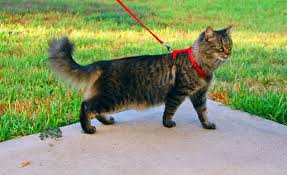Moving is stressful on everyone – including pets. It is easy to overlook the needs of your pets during this time. Try to keep your pet’s routines and schedule as normal as possible before, during, and after your move. Spoil your pets with treats and lots of playtime during the transition. Remember to keep an eye on their food and water intake and address any concerns quickly.
Before the Move
- Keep your pet in mind when choosing your new home. Is the neighborhood walkable? Are there unfriendly pets / animals? Is the square footage of your new home large enough? Are pets welcome? Is the climate appropriate?
- Research pet laws and local ordinances in your new town, state, or country to make sure what is required and that you will be in compliance.
- Choose the correct carrier or crate for traveling. Select a hard sided carrier that is just large enough for your pet to stand up, turn around, and lie down. Your carrier should have a leak proof bottom, secure door latch, and should fit safely in your vehicle. Leave the carrier out in a common area, so that your pet can become familiar with it. Place foods and toys near and inside the carrier. Remember to give praise and treats to reinforce good behaviors!
- Schedule a veterinarian appointment a few weeks before your move. Make sure to have a new vet lined up at your destination. Have your current vet send medical records and documentation to your new vet. Make sure your pet’s shots, including rabies shots, are up to date and request a copy of your pet’s health certificate to have on hand during your move. Ensure you have enough of any necessary prescription medications or food to last until you are settled in your new home.
- Remember to update your pet’s collar tags and microchip before your move. ID tags should ideally include your cell phone # – as these do not change as often as land lines.
Loading Day
- If feasible, hire a pet sitter or board your pets the day of the move. If boarding is not possible, confine your pet to one room. The bathroom is a great option as there is not much to move from this room and any accidents are easy to clean up. Make sure to supply food, water, toys, and comfort items such as blankets. Put a clear sign on the door to keep door closed. Set aside time to check on, visit your pet, and bathroom breaks if necessary.
- Pack a pet “overnight bag” if you are moving interstate or travelling overnight. Include enough food for the trip, toys, blankets, prescriptions, water & water bowl, disposable litter box, leash, harness, etc.
During the Move
- If you are traveling by vehicle: Never ever transport a pet in the back of a pickup truck or moving truck. Allow ample space around the carrier in your vehicle for proper ventilation. If you pet is travelling outside the carrier in your vehicle, be sure to properly restrain to prevent injury. Do not leave your pet unattended in your vehicle. Temperatures in vehicles can rise over 20 degrees in as little as 10 minutes.
- If you are traveling by airline: Research airline regulations and requirements. Book your flight directly through the airline to avoid any issues with a third party. Consider a direct flight to lessen the stress on your pet. Before the flight, select a suitable air transport kennel. Mark the kennel with “Live Animal”. Include pet’s name, address, contact phone #, and any special notes. After boarding, confirm with flight attendant that your pet has been loaded.
- Keep your pet’s paperwork including health certificates on hand during the move. The health certificate must be signed by an accredited veterinarian after examining your pet and determining that it is free of infectious diseases and satisfies all import requirements of the receiving state, territory, or country.
- Research and select pet friendly hotels and lodging along your trip. Once inside your room, check the room for any pet related dangers before letting your pet out of its carrier.
- Keep your pet secured or leashed at all times while traveling. The stress of a move can make the most obedient pet run away in unfamiliar surroundings.
Move In Day
- Set up and unpack as much as you can before your new pet arrives at your new home. If possible, hire a pet sitter or board your pet on move in day as well.
- Set up a “Home Base” room for your pet – similar to loading day. When your pet is comfortable, gradually introduce them to other rooms strategically. Place familiar objects in similar locations as your former home. Now is not the time to change routines and schedules when your pet is under stress from the move.
- Be sure to inspect and pet proof your new home and yard. Look for any electrical cords, windows, loose screens, dangerous houseplants, and pest control traps that may harm your pet. Outside, walk your yard and look for potential dangers. Inspect your new fence to ensure your pet cannot escape.
We hope these tips are helpful for your next move with your beloved pet! Now let’s relax and get moving!
Are you ready for your next relaxing moving experience? If you’re moving soon, give our team a call today and let’s get started!
















